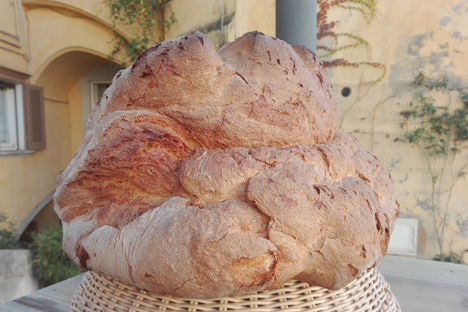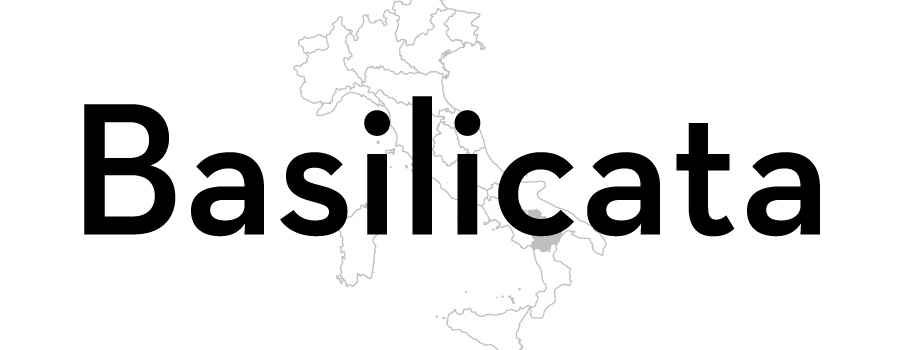
Pane di Matera: the ancient bread of Basilicata
In the town of Matera, history reveals itself not just in the form of ancient cave dwellings and paintings, but also in the form of pane di Matera – an ancient bread that has been made here for thousands of years.
Pane di Matera: the ancient bread of Basilicata
In the town of Matera, history reveals itself not just in the form of ancient cave dwellings and paintings, but also in the form of pane di Matera – an ancient bread that has been made here for thousands of years.
Many of us gravitate towards pasta when we think of starchy Italian carbohydrates, but the country boasts an impressive collection of the greatest breads on Earth, too. Aside from pizza – perhaps the most widely consumed ‘bread’ in the world – you have glorious slabs of fluffy focaccia in Liguria, PDO-protected Pane di Altamura in Puglia, Sardinia’s famous music paper bread (called pane caresau in Italian) and a huge range of other local breads depending where you are in the country.
The root of Italy’s amazing bread tradition lies in the ancient grains that grow happily in the agricultural heartland between Campania and Emilia-Romagna. Many of these strains of wheat are unique to Italy and have been cultivated by local farmers for thousands of years, forming the backbone of local communities. Basilicata lies right in the middle of this grain belt, so it stands to reason that bread is important here – visit this quiet region and you’ll find a variety of different loaves, but none held in such high regard as the ancient Pane di Matera.
On the surface, it doesn’t seem like much. Flour, water, yeast, salt – the same four ingredients that make up most loaves of bread. Yet Pane di Matera is different entirely – a hulking beast of a loaf with a hard, dark brown crust and pale yellow crumb. The locals say the shape – roughly conical – resembles the harsh nearby mountains of Murgia. The intense flavour and aroma comes in part from the quality of the wheat here – true Pane di Matera is made with a Lucanian-milled semolina grain known as ‘Senatore Cappelli’ – but also from the fermentation process. The bread is made with natural yeast taken from grapes and figs fermented in local spring water; the dough is then left to ferment and rise over a long period of time, much like sourdough.
Tear the bread open and you’re greeted by that distinctive yellow crumb, and the rich smell of baked bread. The flavour is much like sourdough, but more intense – the natural yeast gives Pane di Matera a similar sour flavour, and the long fermentation results in large, irregular holes in the bread. Matera bread can be eaten with practically anything – it is fantastic with local meats and cheeses, as well as fresh tomatoes, olive oil and herbs. Once the bread goes stale it becomes an important ingredient in other dishes such as pasta mollicata – a pasta dish where stale bread is used as part of the sauce – and acquasale – a bread soup similar to Tuscan acquacotta.
Matera itself is a place of some significance, even when you disregard the bread. The picturesque town is famous for a complex of ancient caves – called sassi – which are widely regarded as some of the oldest human habitations in all of Italy (cave paintings in the sassi indicate that humans lived her as long ago as 7000BC). The town has been a UNESCO World Heritage Site since 1993, and the sassi have been an area of some regeneration – some of the caves are still inhabited, or are home to small businesses like bars and hotels.
The sassi play an important part in the story of Pane di Matera – once upon a time, the loaves would have been made in these natural stone shelters, as they provided a consistent temperature which allowed for the slow fermentation of grain and bread dough. Up until the 1950s, local families would take their dough to be baked in the town’s communal ovens – people would book a time in the morning to bake their bread, and an oven assistant would walk through the streets of Matera, announcing the start of each slot (at six, eight and ten o’clock) with a shrill blast of their whistle.
Modern technology has intervened since then – the grain is stored in special ventilated silos which maintain a consistent temperature, and the dough is made and baked in industrial bakeries, rather than the communal wood ovens that local families used to share. These ovens haven’t been in use since the 1950s but they still stand proudly in the town, and many of the wooden stamps – unique to each family – can be seen in the Domenico Ridola National Archaeological Museum of Matera.
Although the bread is made in different conditions now, the methods and product are the same, as protected by law. Pane di Matera is an IGP-protected food product, meaning that it can only be made in the town of Matera, and must be made to the same way it has always been. Pane di Matera isn’t just bread, then, but a vital connection to the past. Humans have been making bread almost as long as they have lived here (as shown in some of the cave paintings in the sassi) – now we can enjoy the unique flavour and texture of this ancient bread for generations to come.



